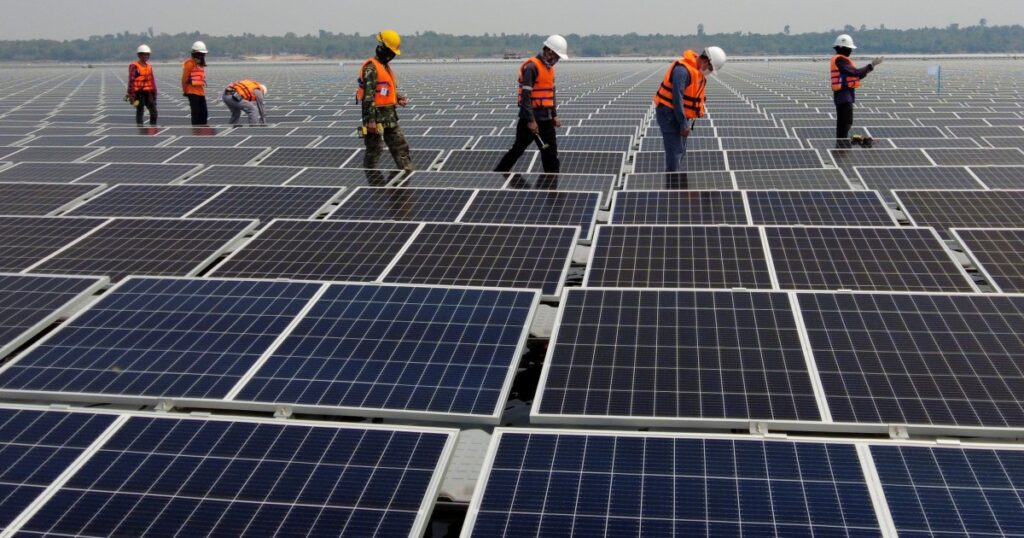Bangkok, Thailand – Following a swift text message, Chonlada Siangkong learned that she had lost her job at a solar cell factory in Rayong, Thailand. The factory, operated by Standard Energy Co, a subsidiary of the Singaporean giant GSTAR, closed its doors last month due to new tariffs slated by the United States on solar panel exports from Southeast Asia.
Beginning Monday, US Customs and Border Protection is set to impose tariffs ranging from 375% to over 3,500% on solar panel imports from Thailand, Cambodia, Vietnam, and Malaysia. This significant escalation in duties has raised concerns about the sustainability of Southeast Asia’s solar export industry, which accounts for nearly 80% of solar products sold in the US.
The Human Impact of Tariffs
Chonlada, a 33-year-old mother, now faces uncertainty as many workers in the region do. She recounted, “We were all shocked. The next day, they told us not to come to work and that we would not receive any compensation.”
Ripple Effects Across the Industry
US officials assert that Chinese manufacturers have exploited Southeast Asian countries to bypass tariffs and flood the US market with inexpensive solar panels, thereby damaging local companies. Trade officials identified several major players, including Jinko Solar and Trina Solar, as responsible for unfair trade practices.
- In 2023, Thai solar exports to the US were valued at over $3.7 billion.
- This closure comes shortly after Standard Energy’s facility, costing $300 million, had begun operations, with its first solar cell produced in August.
- Technicians like Kanyawee, a production line manager, expressed disbelief over the rapid shutdown, noting that expensive machinery and raw materials awaited production.
According to Ben McCarron, managing director of Asia Research & Engagement, the implications of these tariffs are severe. He pointed out that Southeast Asian nations accounted for approximately 80% of US solar imports as of 2024, and some manufacturers are beginning to exit the region entirely.
Unfair Market Dynamics
Accusations against China highlight concerns over subsidies that have granted its solar firms an unfair competitive edge. From 2013 to 2023, China invested $2.7 billion into clean energy projects across Southeast Asia, thus deeply ingraining itself in the region’s solar manufacturing landscape.
The American Alliance for Solar Manufacturing, a coalition of industry stakeholders, has been vocal in pushing for an increase in tariffs on Chinese imports. Without intervention from US policy makers, those impacted by the tariffs have limited options—appeals can only be filed annually after a “sunset review” clause takes effect after five years.
The Future Looks Bleak
Experts warn that the repercussions extend beyond low-skilled labor. “The trade war isn’t just harming unskilled workers; technicians and skilled laborers in the solar supply chain are also affected,” says Tara Buakamsri, an advisor at Greenpeace. “Manufacturers will likely need to reduce their workforce.”
Conversely, some industry analysts believe that once initial challenges are addressed, Chinese firms might become essential in providing products necessary for achieving regional emissions targets. The governments of Thailand, Cambodia, Malaysia, and Vietnam have courted Chinese investments while also striving to meet their energy needs through greener technologies.

Should US tariffs hamper solar exports, it may ultimately bolster the growth of domestic markets in Southeast Asian countries. McCarron suggests that leftover supply could support local demand, especially if governments incentivize domestic solar production through policy reforms.
Looking Ahead
For Southeast Asian solar companies, long-term survival may hinge on easing regulations and reducing the existing domination of oil and gas monopolies in energy policy. Simultaneously, the exclusion of Southeast Asian solar products from the US market could undermine green energy efforts within the US itself, potentially hindering consumer access and impacting prices.
As highlighted by Pavida Pananond, a Professor of International Business, “Thailand’s solar cell production is heavily export-driven, with the US being a crucial market.” Yet, the consequences of these tariffs are far-reaching, posing challenges not only to producers but also to American consumers and global green initiatives.


